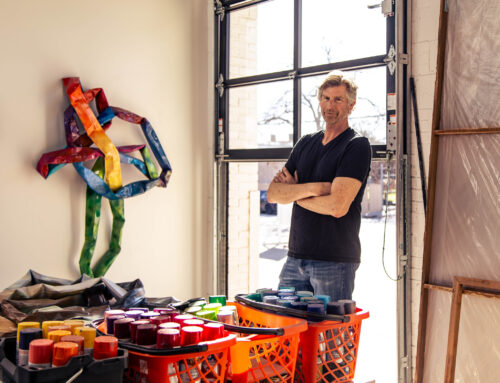Recently, I walked out into the back yard to find my husband visibly upset. At first, I couldn’t figure out why. No neighborhood dog was barking itself hoarse; there was no din of construction crews’ hammers, bulldozers or chainsaws that often compose our outdoor ambience.
Yet there my spouse stood, gesturing angrily in the direction of the back fence. And then I realized the source of his irritation. Bright, hot sunshine poured into the back corner of our yard, replacing the shadows and shade that previously cooled the northern end of our property.
The house behind us had been bulldozed that week to make way for a new architectural statement, and apparently the 100-year-old shade tree that occupied the rear-most corner of the lot did not fit in with the plan, so it had been razed as well.
We will not miss the house that had disappeared; aesthetically it had not kept up with the times and was poorly maintained, with faded pink shutters and roof shingles stitched together by little more than mold and mildew. But the tree: We will definitely miss the tree. It formed a green vista behind our fence, towering over the alley that separated us, a profusion of blooms in the spring, and abundant leafy shade in the summer.
Preston Hollow is a neighborhood characterized by its trees. First-time visitors invariably comment on the size and abundance of the trees whose branches hang over our streets and rise above our eaves. These trees distinguish our neighborhood from other sections of Dallas and provide much of the charm that attracts residents to the area in the first place.
But the current teardown phase that is changing the architectural style of our neighborhood is also destroying it environmentally. Don’t get me wrong: I don’t care if country French architecture and English Tudor influences replace the 1950s ranch homes that still exist in Preston Hollow (well, I do slightly, but that’s another column). These new homes bring new residents that revitalize the neighborhood, keep the property values increasing (and the tax rates, but that really is another column also), and invigorate the social fabric of our environment.
I think, however, that this process should take place without sacrificing the trees that differentiate our neighborhood from the multitudes of concrete and brick suburbs that ring the metropolitan area. All of us in Preston Hollow have chosen to live in the heart of Dallas and make the accommodations that city living requires, but we shouldn’t have to sacrifice a living natural resource to accommodate the millennium families’ need for more space.
The lifespan of these trees is double that of the houses that replace them. These new homes will someday also fall victim to a strong economy and the changing needs of city dwellers. They will not exist 100 years from now, at which time someone puts a historical preservation plaque on their facades; they will be torn down long before they are considered a classic. In short, these houses are a renewable resource that cycles through every 30 to 40 years. The trees aren’t.
The spindly, stick trees that landscapers plant in place of the original trees will do nothing for many years to enhance the aesthetics of the neighborhood. And in the meantime, we face the environmental impact of less photosynthesis to combat the greenhouse effect, higher utility bills because our houses have lost cooling shade in the summer, and hotter, meaner streets that don’t encourage the neighbors to walk, jog and stroll outdoors because there’s no respite from the harsh summer sun.
As I drive through the neighborhood and see the annual summer sprouting of For Sale signs, I can only hope that the families that choose to move to Preston Hollow will do all they can to maintain the green integrity of the neighborhood. I optimistically believe that the loss of these trees can somehow be avoided in future construction projects. Preston Hollow is more than proximity to downtown and oversize lots; it is a green sanctuary from the concrete and steel that surround us. All of us should do our part to make sure it stays that way.






